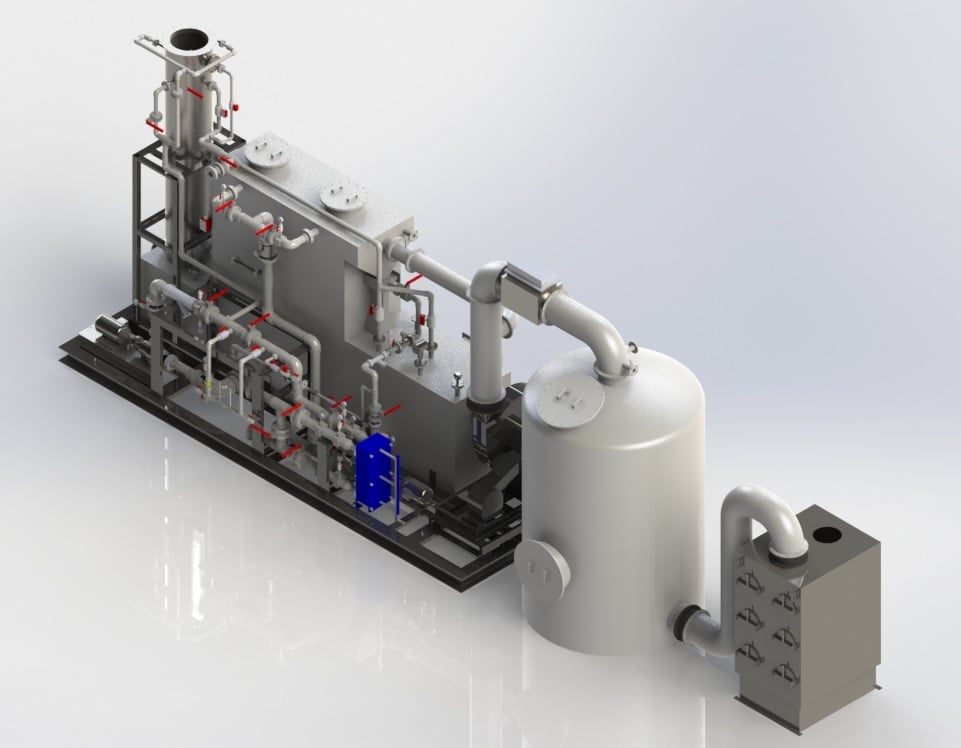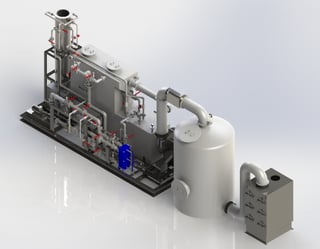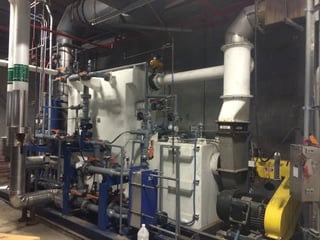In October 2014, existing medical waste incinerators had to be compliant with the US EPA’s new Hospital, Medical, and Infectious Waste Incinerator (HMIWI) MACT standards. Nearly all of the systems that planned to continue incineratrion had to be upgraded with add-on controls to meet particulate (PM), lead (Pb), mercury (Hg), Cadmium (Cd), dioxins/furans (D/F), or a combination of the pollutants. Pb was the most common of those pollutants requiring additional capture.
Envitech upgraded scrubbers for three existing medical waste incinerators. In October 2015, I presented a  paper at the International Conference of Thermal Treatment
paper at the International Conference of Thermal Treatment  Technologies and Hazardous Waste Combustors (IT3/HWC) about using a wet electrostatic precipitator (WESP) on the National Institute of Health’s (NIH’s) Rocky Mountain Lab (RML) existing medical waste incinerator. Envitech also designed and built a fourth scrubber system which was permitted as a large (> 500 llb/hr of waste) new medical waste incinerator. The table below compares the previous 1997 standard for lead (Pb) for a large incinerator to the current (2009) standard for an existing incinerator and a new incinerator.
Technologies and Hazardous Waste Combustors (IT3/HWC) about using a wet electrostatic precipitator (WESP) on the National Institute of Health’s (NIH’s) Rocky Mountain Lab (RML) existing medical waste incinerator. Envitech also designed and built a fourth scrubber system which was permitted as a large (> 500 llb/hr of waste) new medical waste incinerator. The table below compares the previous 1997 standard for lead (Pb) for a large incinerator to the current (2009) standard for an existing incinerator and a new incinerator.
As shown, the current emission limit for an existing incinerator is just 3% of the limit for the 1997 standard. Add-on controls need to achieve 97% reduction in Pb for medical waste incinerators just meeting the previous limit. This is a significant reduction.
Lead (Pb) Emission Limits for Large Incinerators, mg/dscm
- 1997 standard 1.2
- 2009 standard existing 0.036
- 2009 standard new 0.00069
 Pb reduction for a new large medical waste incinerator is even more dramatic. The emission limit is a mere 0.06% of the 1997 standard. Compared to an existing system permitted to the new standard, a large new medical waste incinerator must emit 2 orders of magnitude less Pb.
Pb reduction for a new large medical waste incinerator is even more dramatic. The emission limit is a mere 0.06% of the 1997 standard. Compared to an existing system permitted to the new standard, a large new medical waste incinerator must emit 2 orders of magnitude less Pb.
Envitech’s scrubber for a permitted new medical waste incinerator recently passed the stack test and demonstrated compliance with Pb emission less than 0.00069 mg/dscm. We believe it’s the only systems in operation today that is compliant with the HMIWI MACT standard for a large, new medical waste incinerator.
It is interesting that despite the ultra low emission standards required by the HMIWI MACT standard, there is still significant public resistance to new permitted systems. It’s clear the public doesn’t understand the impact of these rules and how far technology has come to enable environmentally friendly and safe operation of these systems. The role of these captive systems (treating waste from the facility where it is generated) may become more important in emergency response plans of state and local governments. This was evident during the recent Ebola episode where large amounts of waste needed to be treated and disposed. Some would claim that treating the waste at the facility where it is generated poses less public risk than transporting the waste on public roads and highways to a centralized hazardous waste facility. More work needs to be done to educate the public on the capability of these advanced emission control technologies.
For more information on this topic, please read our paper at the IT3 conference.



